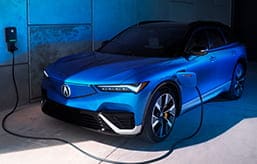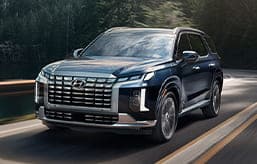- MPG is a deceptive way to measure fuel economy.
- Some propose switching to a European-inspired miles per 100 miles unit of measurement.
- Focusing on improving the fuel economy of the thirstiest cars on the road will be better for the environment.
We're Measuring Fuel Economy Wrong, and This Is Why
Miles per gallon needs to go, and it's easy to see why
Americans have a “systematic misunderstanding” of mpg (miles per gallon), the yardstick we’ve measured a car’s efficiency for decades. Vox illustrates this point nicely with a pop quiz: Which of these options saves more gas?
A) Swapping a car that gets 25 mpg for one that gets 50 mpg, or
B) Replacing a car that gets 10 mpg with one that gets 15 mpg
Turns out, if you answered A, you fall into the group of Americans with that same “systematic understanding” of how we measure fuel economy.
In scenario A, the old car that hits 25 mpg is using 4 gallons of gas to travel those 100 miles compared to the new car’s 2 gallons per 100 miles. Sounds pretty good. A 50% improvement.
In scenario B, the 10 mpg car needs 10 gallons to do 100 miles, while the newer one (at 15 mpg) uses 6.7 gallons. In other words, improving the fuel economy of B’s car by just 5 mpg saves 65% more gas than A's mpg gains. But how can that be? The bigger number should equal more gas saved, right? As Richard Larrick, a professor at Duke University’s Fuqua School of Business, tells Vox, “There are diminishing returns from mpg [improvements].” Instead, what we need to be focusing on isn’t improving the fuel economy of the vehicle that hits 30 mpg, but the car or SUV that gets 10 mpg, even if that improvement is only by 1 mile per gallon.
So we’ve been measuring fuel economy wrong, and broadly speaking, pushing for the wrong kinds of fuel economy enhancements. The Honda Civic Hybrid is a great car, but it doesn't benefit the environment nearly as much as, say, a Ford Expedition (which gets 18 mpg combined) with a hybrid powertrain would. To boot, the math shows that improvements to the Expedition’s fuel economy (or the mpg of other large SUVs) are a greater environmental positive than any gains the Civic will make.
This all comes down to a Reagan-era policy buried within the Corporate Average Fuel Economy (CAFE) standards that differentiates between cars and “light trucks,” which are today what we call SUVs and pickups. This so-called light truck loophole means we put less regulatory pressure on Ford to remedy the Expedition’s paltry fuel economy than we do on Honda to improve the Civic’s fuel economy.
So what’s the fix? Vox’s coverage cites a 2015 study written by Larrick and two others. In it, they suggest doing it like the Europeans. Over in the EU, they use liters per 100 kilometers driven to measure fuel economy. Here, we ought to be using gallons per 100 miles to measure the same. Kate Whitefoot, an associate professor of engineering and public policy at Carnegie Mellon University, explains to Vox why: “[Europeans] do it that way because fuel consumed per mile is directly related to energy use and directly related to emissions, whereas our mpg is not.” By pushing for a less convoluted measure of fuel economy (in addition to closing the light truck loophole), automakers will be faced with greater incentive to take their very worst mpg offenders and rehabilitate them into more fuel-conscious models.
Edmunds says
A regulatory shift in how our government evaluates fuel economy can result in huge improvements in economy among the worst offenders, like large trucks and SUVs.






 by
by  edited by
edited by